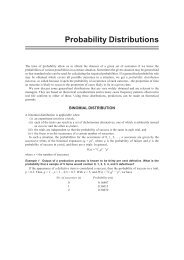International-Business-Dr-R-Chandran-E-book
International-Business-Dr-R-Chandran-E-book
International-Business-Dr-R-Chandran-E-book
You also want an ePaper? Increase the reach of your titles
YUMPU automatically turns print PDFs into web optimized ePapers that Google loves.
143<br />
<strong>International</strong> <strong>Business</strong>- <strong>Dr</strong>. R. <strong>Chandran</strong><br />
to tap technological advancements wherever they may occur. This has<br />
resulted in an accelerated growth of globalization.<br />
6. All the countries are vigorously developing their airports, seaports,<br />
energy sources and social amenities. Singapore, Malaysia, South Korea<br />
and India facilitate companies by assuring.<br />
ORGANISATION AND GLOBALISATION<br />
Due to the increased rate of globalization, the global economic landscape<br />
will undoubtedly look very different 20 years from now. Companies will<br />
need to adapt to this changing landscape and those that choose to move first<br />
will have a better chance of turning these changes into competitive<br />
advantage.<br />
The author regards three fundamental changes in the global economic<br />
landscape as inevitable. These are described below.<br />
Developing countries will essentially dominate the world economy in the<br />
future<br />
Given the commitment of the post-Deng Chinese leadership to economic<br />
reform, China is likely to remain in the most successful economic story. Its<br />
status as a super power is visible in innumerable fields like textiles,<br />
garments, chemicals, silk, soft toys and ceramics. Despite its rapid growth<br />
since 1979, China’s economy has attracted attention, only during the last few<br />
years.<br />
China is not alone. As the economies of other countries such as India,<br />
Brazil, Mexico and Russia continue to gather momentum, they will<br />
increasingly become major contributors to the creation of new wealth. It is<br />
expected that in 20 years, China’s economy will be larger than that of the<br />
U.S. and India’s will be as big as that of Japan. The regional composition of<br />
the world’s largest corporations will change radically, spreading, over the<br />
developing countries, rather than just being limited to the U.S. and Europe,<br />
where the majority of them are situated today. As a consequence intraindustry<br />
competition will intensify.<br />
As an example from India, consider the case of the loosely held Tata<br />
Group, a group of companies involved in a number of businesses, such as<br />
steel, cement, engineering, chemicals, tea, construction, IT, hotels and<br />
Only for Private Circulation





